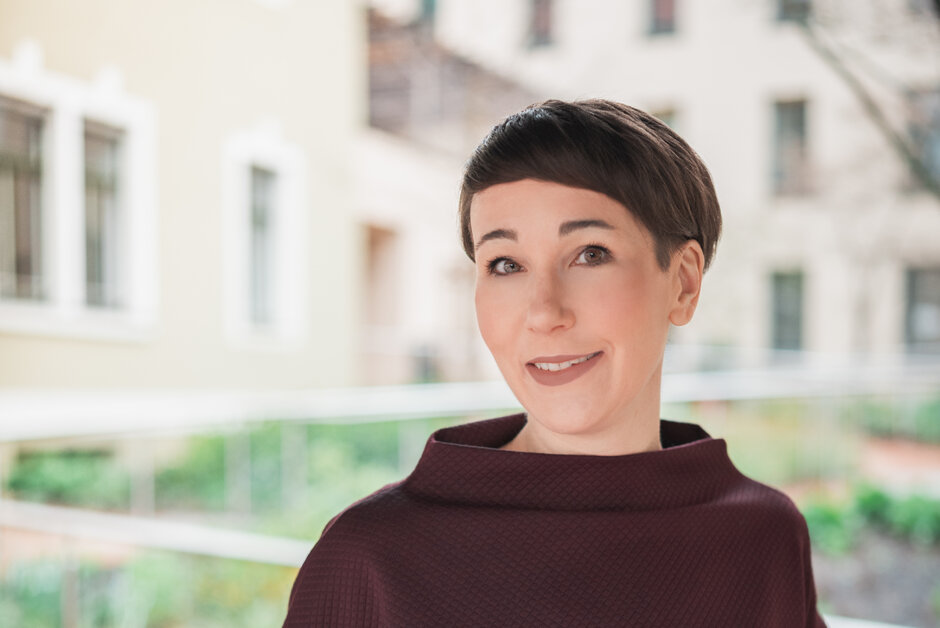#talktime

Doing History
Have you ever heard of the Battle of Bull Run? The first full-scale land battle of the American Civil War was fought in July 1861 near Manassas, Virginia. On a regular basis since 1961, thousands of actors have reenacted this battle for two days at the historical site, under the direction of a retired general, using historical costumes and weapons of the time. Tens of thousands take part in this event. Professor Dr. Juliane Tomann, UR’s junior professor for public history, takes a close look at such reenactments and what they tell us about the past – but more importantly what they inform us about the present in which the performance takes place.
Ask How History is Made
Reenactments constitute an emerging field of research in public history. Cultural scientist and historian Juliane Tomann holds UR’s first professorship on public history, a rather young sub-discipline that uses a wide variety of representations of the past as sources, namely performative, visual, digital, or virtual. At UR, research in public history takes an interdisciplinary approach to dealing with the complex conditions under which narratives and representations develop. The scientist appreciates this when exploring performative practices. She focuses not only on current representations but is interested in how such practices took place in the past. “A battle that is performed anew each year should also be analyzed in terms of previous performances”, she notes.
Visitors to Regensburg's medieval old town will encounter historical city tours or recurring medieval markets. Reenactment is not limited to battles, “it encompasses historical reality television, performance art, theater, experimental archeology, pilgrimage, and much more”, Tomann says. Reanimating historically striking events of national or cultural history reactivates our cultural memory, deepens our understanding of the past and fosters a critical attitude. “At the same time, they might contribute to populism and simplified versions of history.”
Recently, Juliane Tomann co-edited a book to address such questions through reenactment case studies drawn from various world regions. Reenactment has, since its early flowering in the 1970s, emerged as a transnational phenomenon, the historian notes. Currently, she is particularly interested in how reenactment practices developed in the GDR, Poland and Czechoslovakia before 1989. Regensburg and its regional proximity to the border area, as well as its long-standing research focus on the Eastern European region, closely complements her research areas as well as her personal experiences.

How to Deal with the Past
Her interest in public history began at the German-Polish border, in the region around Frankfurt/Oder and Słubice, where history has always been a controversial issue: “Some historical narratives kept clashing strongly and constantly along this border, also in terms of language and communication.” Juliane Tomann studied at the Europa-Universität Viadrina, reestablished in 1991, with locations on both sides of the border. “Nevertheless, one could feel the years of division”, the scholar says.
Together with likeminded young adults, she worked for an NGO in the border region in the mid-2000s. “We spoke both languages there and felt a sense of responsibility to foster the German-Polish dialogue.” It was the time when Juliane Tomann became interested in how different groups deal with the past in the present. She wanted to learn how narratives and images emerge and circulate and how historical culture and historical consciousness are shaped and physically represented in societies.
Commemorative Culture
Subsequently, “the goal is to bring together discourses and actors”, also when it comes to knowledge production within and outside the academic world. UR’s Center for Commemorative Culture, dealing with remembrance practices, remembrance discourses and historical policies in the present, perfectly complements this endeavor: “The Center connects actors working inside academia with those working outside academia. Both groups are historically aware people who allow narratives to emerge - only in different contexts”, says Juliane Tomann, member of the Center's management.
An actor-centered approach is most important to researchers who are also interested in issues of industrialization and de-industrialization, especially in Central Eastern Europe and the former GDR. “I explore the spaces that emerge when old industries collapse, focusing on how they are transformed. Again, performative acts are of major interest to me.” Currently, she investigates nuclear cultural heritage. How do people deal with former nuclear sites or nuclear facilities after they are shut down?
Trends and Turns
When Juliane wants to clear her head after long working hours, “I grab my three-year-old and we play together with his train set”, she says with a wink. “There is often self-exploitation in academia. You must draw a clear line and switch off on weekends.” Regensburg has a “feel-good-factor”, the Saxonian-born scientist says while ordering mushroom ragout with bread dumplings, though she was still puzzled about the role of beer in Bavaria. She enjoys UR’s campus, its festivals, and the ease of making contact with her students.
Does the researcher who describes herself as a down-to-earth-person have a vision? “I would like to see the emerging field further establish itself in both its facets – its research-related and its practical parts - in its whole range actually. There are trends and turns in science; topics can disappear for various reasons that don't necessarily have to do with the research you do. We reach out, we are active, we participate in shaping the historical consciousness of societies. I wish that this remains and in the long run has an impact on how historical science functions.”

